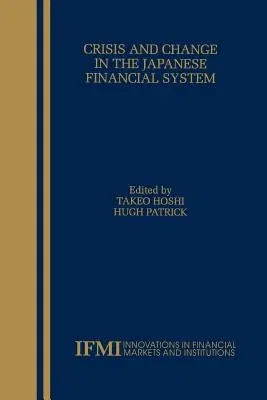At the start of the twenty-first century, the Japanese financial system
is undergoing a major transformation. This process is spurred by a sense
of crisis. Dominated by large institutions, the Japanese banking system
has suffered from serious problems with non-performing loans since the
early 1990s, when the Japanese stock market and urban real estate market
both crashed. Delays in responding to these twin asset bubbles, by both
regulatory authorities and the banks themselves, made matters worse and
led to a banking crisis in late 1997 and early 1998. Not anticipating
this setback, in late 1996 the Japanese government inaugurated its Big
Bang of comprehensive financial deregulation designed to complete the
process of creating `free, fair, and open financial markets'. Beginning
in late 1998 and early 1999 the government finally embarked on a major
rehabilitation of the Japanese banking system, including making
available some Yen 60 trillion (approximately USD 500 billion) of
government funds to recapitalize fifteen major banks, adequately fund
the deposit insurance program, and write off the bad loans of
nationalized or bankrupted banks. One result of this reform process is
that the Ministry of Finance (MOF), which dominated Japanese financial
system policy for most of the post-war period, has been stripped of most
of its former regulatory powers.
The purpose of this book is to describe, analyze, and evaluate the
process that is transforming the Japanese financial system. The chapters
address various issues relating to the transition of the Japanese
financial system from a bank-centered and relationship-based system to a
competitive market-based system. Questions taken up include: Why did
Japanese banks get into such serious trouble? Why has the MOF lost its
immense power? How will the Big Bang's financial deregulation further
change the Japanese financial system, including the huge government
financial institutions and postal savings system? What are some of the
broader implications of this transition?
The book is divided into three parts: Part I considers the origins of
Japan's banking crisis; Part II focuses on five particularly important
areas of major actual and potential changes; Part III addresses the
effects of the Big Bang, including its potential systemic externalities.
Taken together, this book offers an unusually up-to-date, comprehensive
and thorough appraisal and evaluation of the profound changes occurring
in Japan's financial system.


